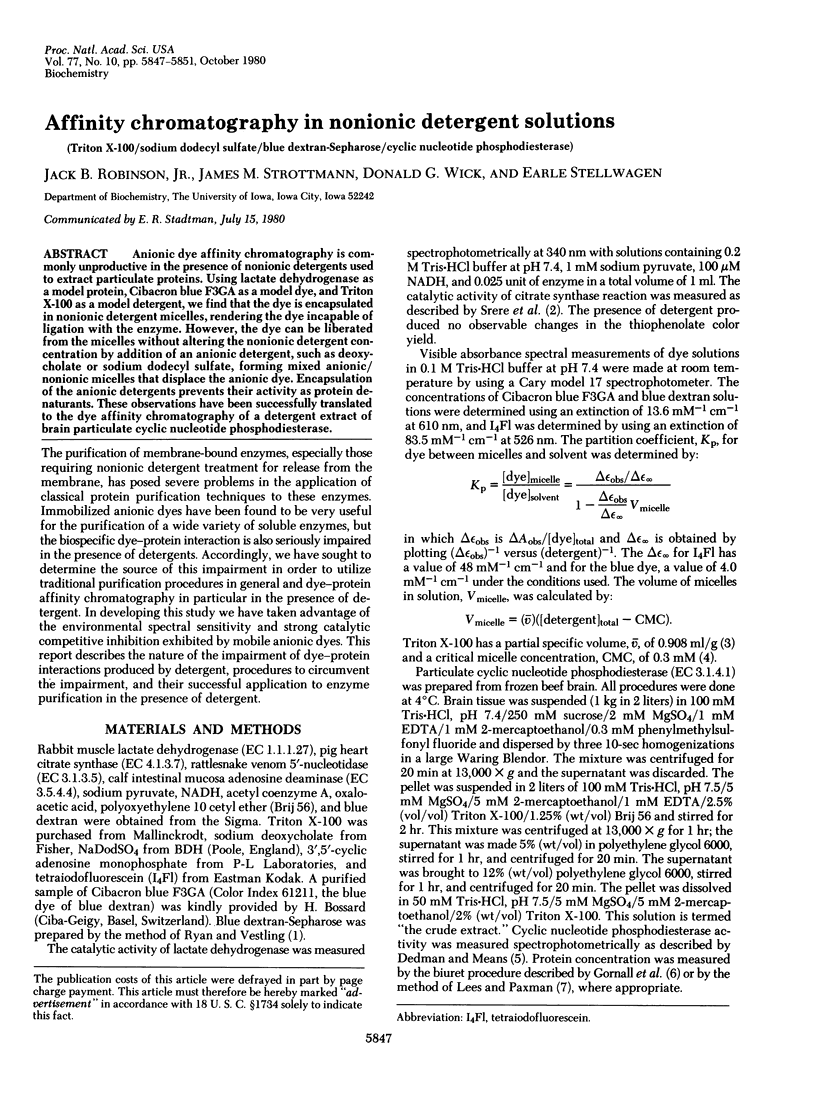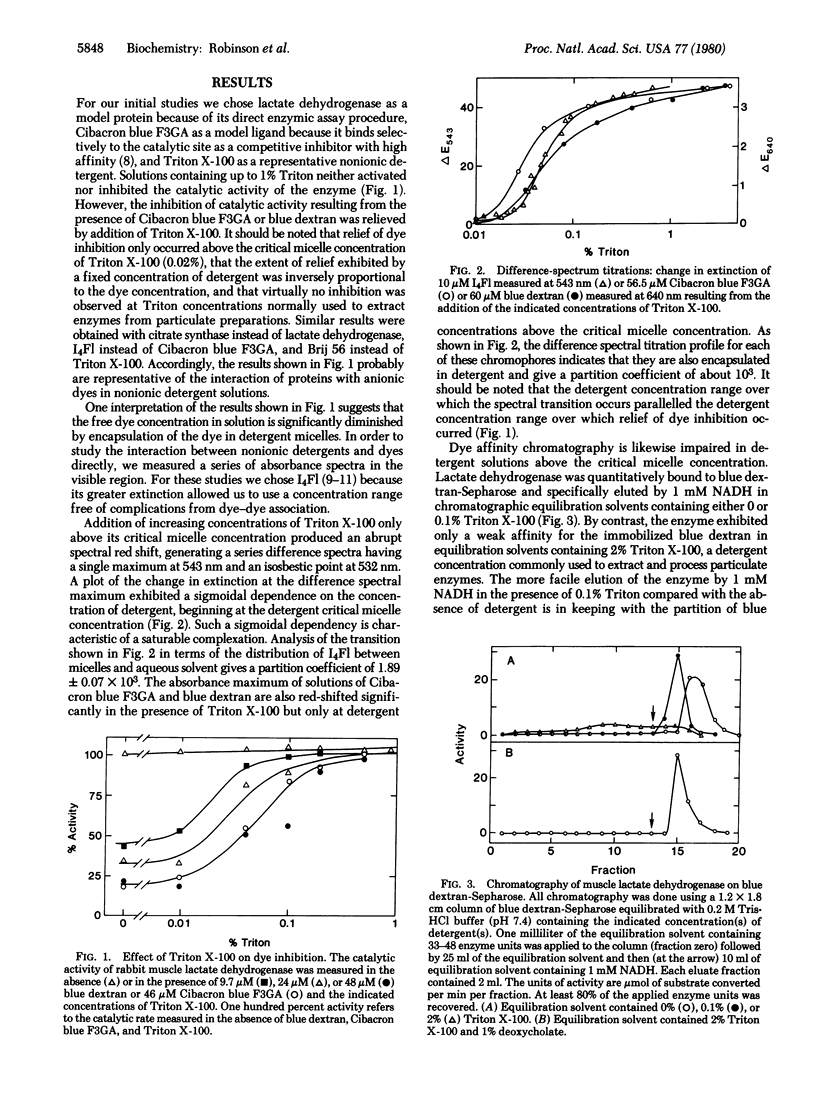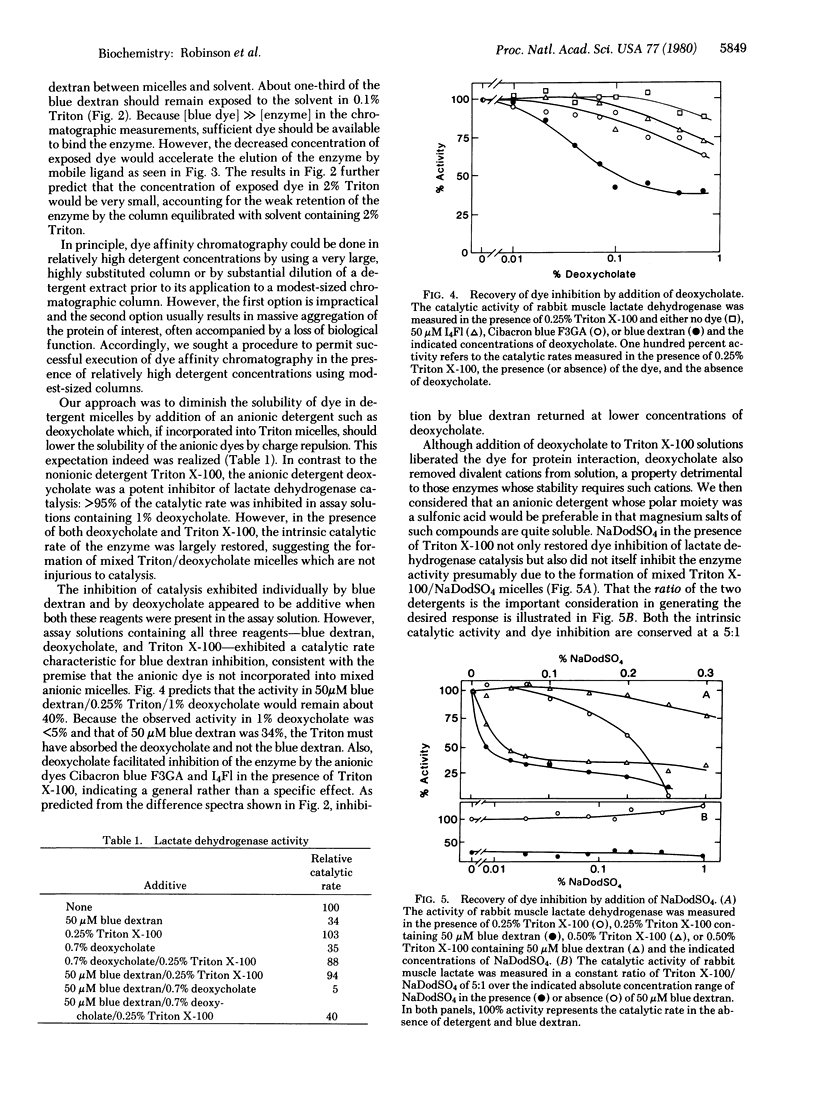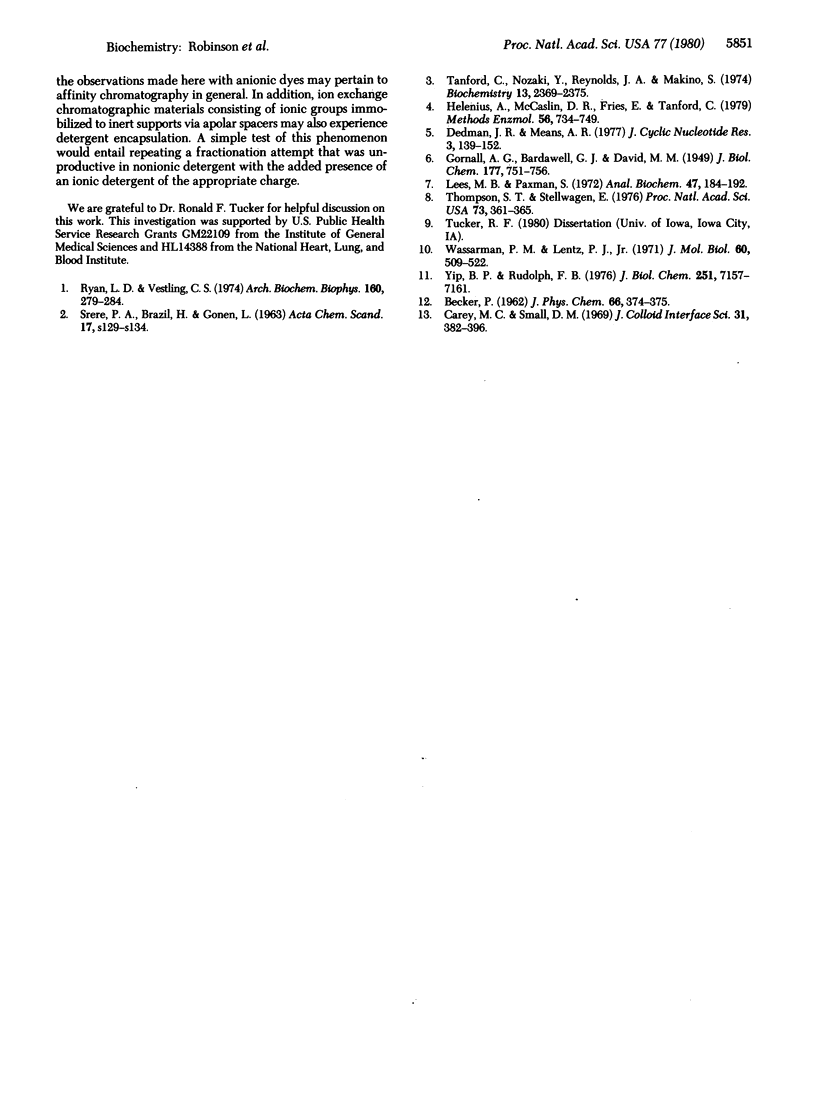Abstract
Anionic dye affinity chromatography is commonly unproductive in the presence of nonionic detergents used to extract particulate proteins. Using lactate dehydrogenase as a model protein, Cibacron blue F3GA as a model dye, and Triton X-100 as a model detergent, we find that the dye is encapsulated in nonionic detergent micelles, rendering the dye incapable of ligation with the enzyme. However, the dye can be liberatd from the micelles without altering the nonionic detergent concentration by addition of an anionic detergent, such as deoxycholate or sodium dodecyl sulfate, forming mixed anionic/nonionic micelles that displace the anionic dye. Encapsulation of the anionic detergents prevents their activity as protein denaturants. These observations have been successfuly translated to the dye affinity chromatography of a detergent extract of brain particulate cyclic nucleotide phosphodiesterase.
Full text
PDF




Selected References
These references are in PubMed. This may not be the complete list of references from this article.
- Carey M. C., Small D. M. Micellar properties of dihydroxy and trihydroxy bile salts: effects of counterion and temperature. J Colloid Interface Sci. 1969 Nov;31(3):382–396. doi: 10.1016/0021-9797(69)90181-7. [DOI] [PubMed] [Google Scholar]
- Dedman J. R., Means A. R. Characterization of a spectrophotometric assay for cAMP phosphodiesterase. J Cyclic Nucleotide Res. 1977 Apr;3(2):139–152. [PubMed] [Google Scholar]
- Helenius A., McCaslin D. R., Fries E., Tanford C. Properties of detergents. Methods Enzymol. 1979;56:734–749. doi: 10.1016/0076-6879(79)56066-2. [DOI] [PubMed] [Google Scholar]
- Lees M. B., Paxman S. Modification of the Lowry procedure for the analysis of proteolipid protein. Anal Biochem. 1972 May;47(1):184–192. doi: 10.1016/0003-2697(72)90291-6. [DOI] [PubMed] [Google Scholar]
- Ryan L. D., Vestling C. S. Rapid purification of lactate dehydrogenase from rat liver and hepatoma: a new approach. Arch Biochem Biophys. 1974 Jan;160(1):279–284. doi: 10.1016/s0003-9861(74)80035-4. [DOI] [PubMed] [Google Scholar]
- Tanford C., Nozaki Y., Reynolds J. A., Makino S. Molecular characterization of proteins in detergent solutions. Biochemistry. 1974 May 21;13(11):2369–2376. doi: 10.1021/bi00708a021. [DOI] [PubMed] [Google Scholar]
- Thompson S. T., Stellwagen E. Binding of Cibacron blue F3GA to proteins containing the dinucleotide fold. Proc Natl Acad Sci U S A. 1976 Feb;73(2):361–365. doi: 10.1073/pnas.73.2.361. [DOI] [PMC free article] [PubMed] [Google Scholar]
- Wassarman P. M., Lentz P. J., Jr The interaction of tetra-iodofluorescein with dogfish muscle lactate dehydrogenase: a chemical and x-ray crystallographic study. J Mol Biol. 1971 Sep 28;60(3):509–522. doi: 10.1016/0022-2836(71)90185-9. [DOI] [PubMed] [Google Scholar]
- Yip B. P., Rudolph F. B. Interaction of tetraiodofluorescein with yeast hexokinase. J Biol Chem. 1976 Nov 25;251(22):7157–7161. [PubMed] [Google Scholar]


